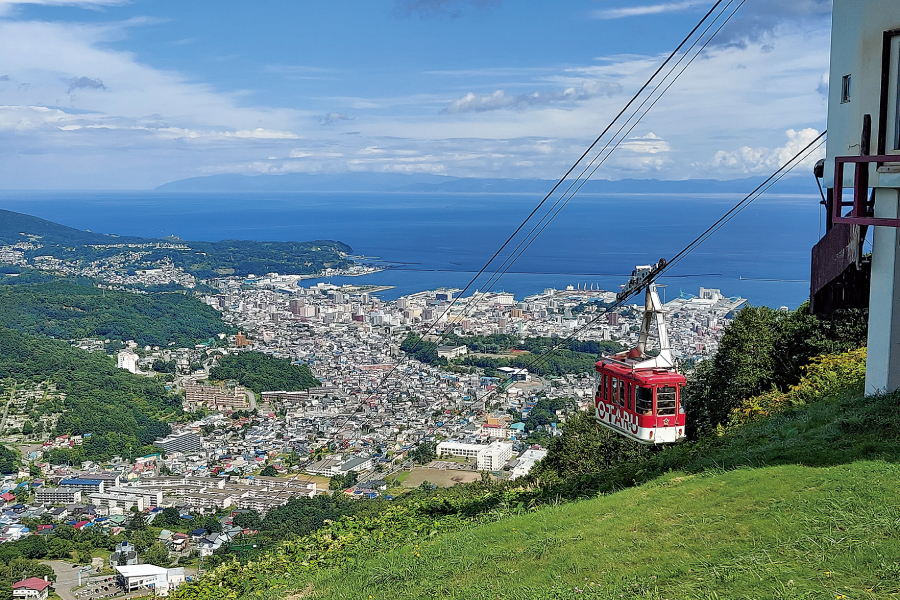
View of Otaru Port from the Summit of Mount Tengu
Five observation platforms near the peak of Mt. Tengu (532.5 m) afford views of Otaru and its port. On a clear day, the view extends to Mt. Shokanbetsu (1,491 m) on the far side of Ishikari Bay. To the west of Mt. Tengu, the mountainous Shakotan Peninsula juts out into the Sea of Japan. The Otaru Tenguyama Ropeway offers easy access to the observation decks, reaching the upper slopes of Mt. Tengu in around four minutes.
【The city below】
The way that Otaru hugs the coastline is apparent in the view from Mt. Tengu. The city began with a small port that developed around the mouth of the Katsunai River. Later, when the first railway line opened in the late nineteenth century, the city developed along the rail line towards the Temiya Coal Pier at the north end of the port.
Traces of the rail line to the coal pier are still visible in parts of the city center. Elegant banks and hotels built near the canal in the nineteenth and early twentieth centuries are reminders of the city’s prosperity and a testament to residents’ preservation efforts.
【The introduction of skiing to Hokkaido】
Mt. Tengu is one of Hokkaido’s oldest ski areas and served as the venue for the first All Japan Ski Championships in 1923. Skiing was introduced to Japan in 1911 when Lieutenant Colonel Theodor von Lerch (1869–1945) of the Austro-Hungarian Empire taught the technique to Japan’s 58th Infantry Regiment in Niigata Prefecture. Skiing arrived in Otaru after a high school teacher learned how to ski in Niigata in 1912 and brought back skis for his students. That same year, von Lerch skied down Mt. Yotei (1,898 m) in nearby Kutchan, and skiing quickly took off in Hokkaido. Mt. Tengu became a popular ski area, given its easy access from the city.
【Natural features】
In early May, a lone cherry tree known as “Tengu Sakura” reaches full bloom near the summit ropeway station. The tree is a native Ezo Yamazakura (lit. “Hokkaido mountain cherry”) believed to be over 100 years old. A 1.6-kilometer-long hiking trail loops through the forest around the mountain summit. White birch, Monarch birch, and Erman’s birch grow along the trail. In warmer seasons, hikers may see the white-bellied green pigeon that inhabits the area from spring to autumn. The rare black woodpecker, a protected species and National Natural Monument, lives in the forests of Mt. Tengu throughout the year. Ezo red fox and Yezo deer may be spotted in the snow in winter.